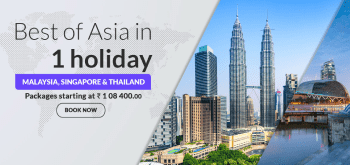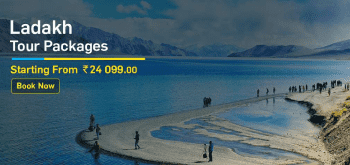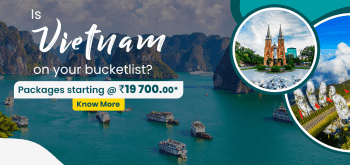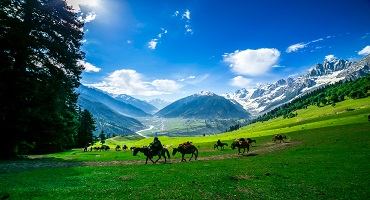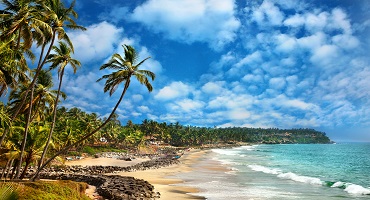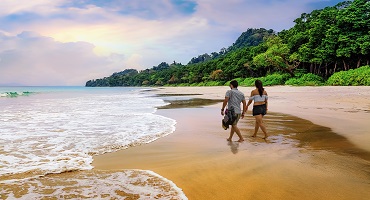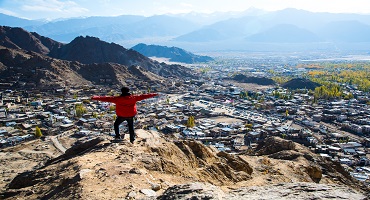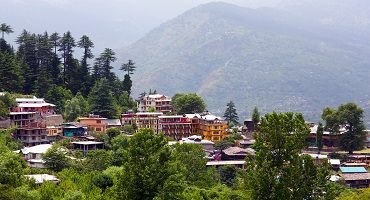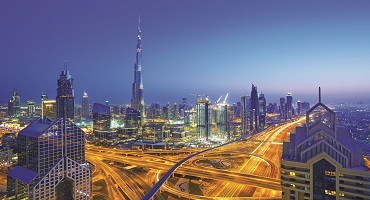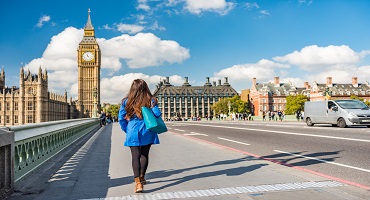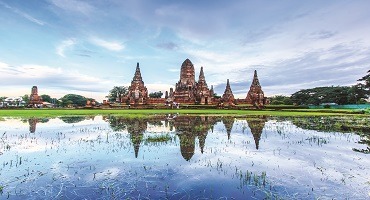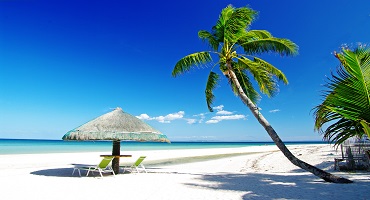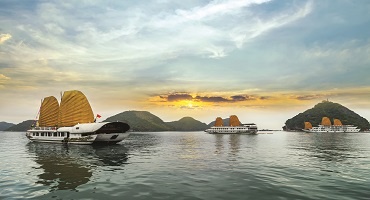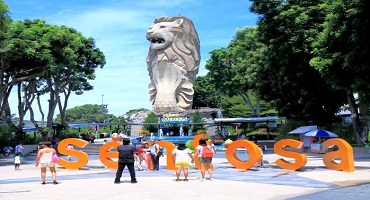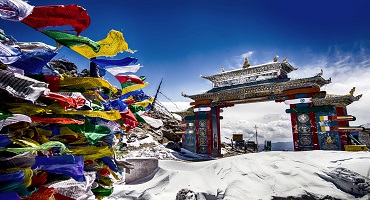Cut down the noise, slow down the rush. Add a splash of green and a dash of chillies. Dig out every known shade of green in your paint box. Let the mountains rise high. Slip a mask on and dance. Let the flags flutter outside the monastery. This country is a jumble of impressions. A melange of sight, sound and taste. It’s where time stretches out like a contented cat. Where the air shakes off all her impurities. Where happiness is measured.
If you’ve lost your smile – Bhutan will find it. If your eye wanders, Bhutan will catch it. If your soul is hungry, Bhutan will feed it.
So, why not plan your next trip to this gorgeous country? It’s close to us, its serene and every element of Bhutan Tourism will charm and delight. So today, let’s take a small step outside our borders…after all, a kingdom awaits.
|
Bhutan Tourism-A Quick Overview
|
|
Continent
|
Asia
|
|
Capital City
|
Thimphu
|
|
Official Language
|
Dzongkha
|
|
Dial Code
|
+975
|
|
Population
|
763,092
|
|
Currency
|
Bhutanese ngultrum / Indian Rupee
|
|
Time Zone
|
(GMT+6)
|
|
Area
|
38,394 sq. km.
|
Highlights of Bhutan
Cities in Bhutan
Think of Bhutan as an emerald – it glitters, it’s green and it has many facets, many shades at its heart. These shades, these sides, these facets are Bhutan’s cities. We begin with Paro – home to some of the oldest Buddhist monasteries and temples. Paro district also boasts of Bhutan’s only international airport. When in Paro, do as the other tourists do and make a trip to the iconic Paro Taksang monastery – commonly known as the Tiger’s Nest Monastery. Perched, 900 metres high on a cliff, this is a hard trek, but the rewards at the end are worth it. Next, is Thimphu – the capital city. This is the fourth highest capital city in the world, where you’ll encounter the cultural hub of Bhutan. Take a trip to Motihang Takin Nature Preserve, where you’ll meet the Takin (Bhutan’s national animal). Following Thimphu is Punakha – the former capital city. This city boasts of the Pungthang Dewachen Phodrang (Palace of Great Happiness). For all the trekkers in the crowd, a visit to Wangdue Phodrang is essential. On one of your hikes, you’ll encounter the nestling grounds of Black-necked cranes and see the famous Gangtey Monastery. You can also visit Trongsa and Bumthang and Phuentsholing – all of which bloom with Bhutanese stories, beautiful views of the mountains and glorious monasteries.
Nature of Bhutan
There’s a special harmony between the Bhutanese and the land they inhabit. Pristine, lush and beautiful, you’ll see great forests, unspoiled valleys, vast fields, rushing rivers and shining lakes. Alpine mountains spear up in the background and the land is rich with 5,500 plant species, 600 orchid species and a variety of medicinal plants. With so much biodiversity, you’ve got your choice of National Parks and Wildlife Preserves to choose from. Where will you go first? Royal Manas National Park? Jigme Singye Wangchuk National Park? Threshing La National Park? Bumdeling Wildlife Sanctuary? Oh, the choices you can make! Bhutan is generous to wildlife enthusiasts. Not only is the flora and fauna extensive, this is also the land of elephants, tigers, golden langurs, rare species of butterflies, water buffaloes and yaks (which are sometimes kept as pets). The higher reaches of the Himalayas are also home to the elusive and rare snow leopard. Bird watchers will be busy trying to spot any of the 620 species of birds, here. You’re going to need to book more than one trip to explore Bhutan’s wild side.
Places of Worship in Bhutan
The journey to the soul takes physical form when you enter Bhutan. Peace and spirituality are nearly one with the air - you can literally breathe them in. We’ve already mentioned the iconic Taktsang Monastery. If you can’t make the climb to the monastery, don’t worry. Bhutan offers many temples and monasteries to soothe the most restless of souls. Take Tashichho Dzong – a grand monastery in Thimphu. Golden roofs spear up from the peaceful red and white building, while the interiors are simple and soothing. If you’re in Punakha, the Punakha Dzong is the second oldest dzong in the country. The colourful monastery stands simple and proud with the blue sky stretching behind it. You must visit Chimi Lhakhang, built by the “divine madman” Drukpa Kunley. This is Buddhism practiced with a twist – through humour, singing and often times, absolutely appalling behaviour by Kunley. You’re going to be entertained, intrigued and shocked when you hear the stories. The next temple holds a special place in the hearts of every devoted parent. Changangkha Lhakhang offers blessings for children and is sometimes involved in the naming of infants. Other places of worship include the mighty Buddha Dordenma (a 51m bronze sculpture of Buddha), Dechen Phodrang Monastery (Palace of Great Bliss), Gangtey Monastery, Rinpung Dzong and Trashigang Dzong.
Cuisine of Bhutan
Spice, spice and more spice – this is the guiding principle of Bhutan’s delicious cuisine. This is most obvious in the world-famous Ema Datshi – a stew made with chillies and cheese. If you’ve got the taste buds to handle that spice, then try Jasha Maroo – diced chicken stew flavoured with garlic, tomatoes, onion, ginger, coriander and yes, chillies. Another hearty stew to try is Phaksha Paa – slices of silky pork stir fried with chillies, ginger and Bok Choy. Soothe those tingling taste buds with Suja – Bhutanese butter tea made from fermented yak butter, boiled with tea leaves and milk. For all you vegetarians, Zow Shungo made from veggies and red rice will soothe and fill your tummies. Another great option is Jaju Soup – a creamy dish made with local spinach or turnips in milk and butter. You can also indulge in some plump momos, stuffed with minced pork, beef, chicken or cheese. For a crispy snack, pick up a helping of Khatem – crispy rings of gourd fried in butter.
Interesting facts about Bhutan:
- Bhutan is known as the “Land of the Thunder Dragon”, because of the violent thunderstorms that growl over the country’s valleys
- Bhutan is the first country to measure growth and performance through “Gross National Happiness” instead of Gross National Product
- Bhutan outlawed tobacco in 2004 and it’s rare to see people smoking on the streets
- The national sports of Bhutan are archery and darts
- Thimphu has no traffic lights – just white gloved traffic officers
- Gangkhar Puensum is the highest mountain in Bhutan. It is so sacred that no one has climbed its peak
Location of Bhutan
The brilliant beauty of Bhutan is contained in the tight embrace of Tibet, China and India. Located in the Eastern Himalayas, Bhutan shares its borders with Tibet in the North, Sikkim and Chumbi Valley of Tibet in the west. Arunachal Pradesh lies in the east and Assam and West Bengal border Bhutan in the South. Bhutan is incidentally, the second least populous nation after the Maldives.
Best time to visit Bhutan
Bhutan’s calendar is filled with different seasons in different regions. You may need to do your research specifically for a particular region. However, there is one chunk of the year that is uniformly pleasant – from October to December – clear skies and sunny days with a hint of chill make the perfect weather to visit Bhutan.
How to reach Bhutan
By Air: Bhutan only has one international airport, based in Paro. The domestic airport is found in south central Bhutan (Gelephu Airport). You can catch a flight via Druk Air, which operates direct flights from Kolkata, Delhi, Bangkok, Kathmandu and Dhaka to Paro. The closest airport in India is Bagdogra Airport in West Bengal. Flying to Bhutan is a treat for the eyes, and during fine weather you can enjoy great views of Mt. Everest, Makalu, Kanchenjunga and Lhotse.
By Road: There are only three borders open to outside tourists, via the road. These are Phuentsholing, Gelephu and Samdrup. You can either take a taxi, bus or any other form of public transportation to cross the border. Phuentsholing is a four to five-hour drive from Bagdogra Airport. Samdrup is situated about 150 kms away from Guwahati and the drive takes approximately 3 hours. You can also catch the bus from Esplanade Station in Kolkata to Phuentsholing.
By Train: There are no direct train routes to Bhutan. You’ll need to disembark from the train and catch a cab or bus to Bhutan. The most convenient stations are New Alipurduar, Siliguri, Hasimara and Jalpaiguri station. Hasimara is a mere 17 km from Phuentsholing, while New Alipurduar is 60 km from Jaigaon. You can catch a bus from Jaigaon. Trains from Guwahati stop at Jaigaon railway station.
History of Bhutan
In its history, Bhutan has never been colonised. Located on the Silk Road between Tibet, the Indian subcontinent and the rest of Southeast Asia, Bhutan has always been known as a Buddhist country. It was first headed by Zhabdrung Rinpoche and was governed as a theocracy (a system of government, where priests rule in the name of God). After a Civil War in the 19th century, the country was reunited and struck up a relationship with the British Empire. Bhutan also forged stabled relationships with India and a troubled one with China. In 2008, Bhutan went from an absolute monarchy to a constitutional monarchy, when it held its first election for the National Assembly of Bhutan.
Bhutan has a rich and robust sense of heritage, culture and spirituality. Add delicious cuisine and heart-breaking beauty to the mix and you’ve got more than you can ever bargain for. So, why wait? Head to our Bhutan Holiday packages and book your visit to this emerald kingdom.

